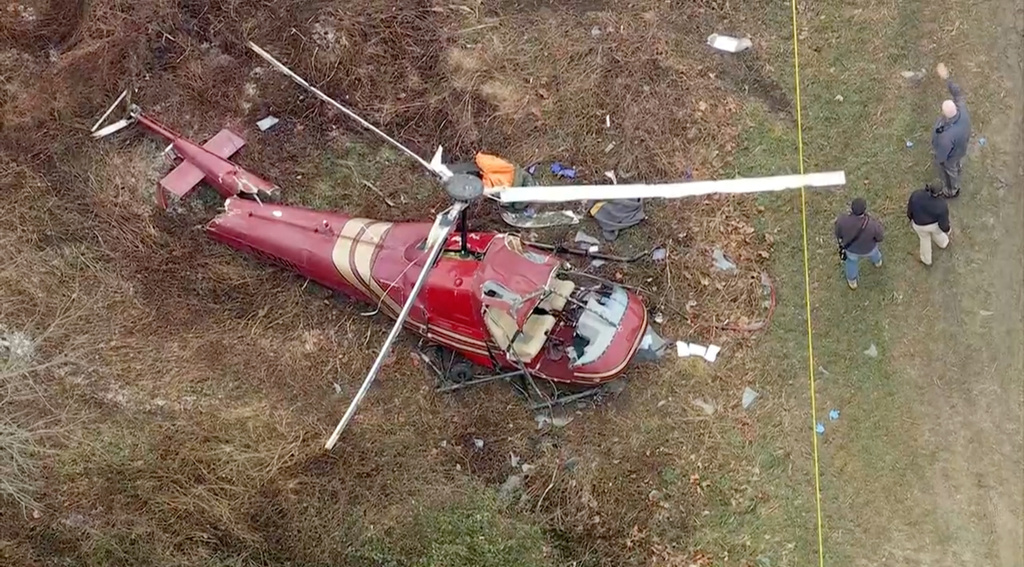The Israeli army severed northern Gaza from the rest of the besieged territory and pounded it with airstrikes Monday, preparing for expected ground battles with Hamas militants in Gaza's largest city and an even bloodier phase of the month-old war.
Already, the Palestinian death toll surpassed 10,000, the Health Ministry of the Hamas-run Gaza Strip said Monday. The ministry does not distinguish between fighters and civilians. About 1,400 people in Israel have died, mostly civilians killed in the Oct. 7 incursion by Hamas that started the war.
The war has quickly become the deadliest Israeli-Palestinian violence since Israel’s establishment 75 years ago, with no end in sight as Israel vows to remove Hamas from power and crush its military capabilities.

Netanyahu says Israel will have indefinite security role in Gaza
This is the clearest indication yet that Israel plans to maintain control over the coastal enclave following its war with Hamas.
Casualties are likely to rise sharply as the war turns to close urban combat. Troops are expected to enter Gaza City soon, Israeli media reported, and Palestinian militants who have had years to prepare are likely to fight street by street, launching ambushes from a vast network of tunnels.
“We’re closing in on them,” said Lt. Col. Richard Hecht, an Israeli military spokesperson. “We’ve completed our encirclement, separating Hamas strongholds in the north from the south.”
Several hundred thousand people are believed to remain in the north in the assault’s path. The military says a one-way corridor for residents of Gaza City and surrounding areas to flee south remains available. But many are afraid to use the route, part of which is held by Israeli troops.
In recent days, airstrikes have hit United Nations facilities where thousands were sheltering, as well as hospitals, which have been overwhelmed by wounded and running low on power and supplies.
A strike early Monday hit the roof of Gaza City’s Shifa Hospital, killing a number of displaced people sheltering on its top floor and destroying solar panels, said Mohamed Zaqout, general manager of all hospitals in Gaza. The panels have been helping keep power on in the facility, which has been reduced to using one generator because of lack of fuel.
The strike came in what witnesses said was one of the heaviest nights of bombardment yet in northern Gaza.

White House under growing pressure as Democrats demand Gaza cease-fire
Many Democrats support Israel's right to self-defense while urging the protection of innocent civilians.
Israel said it struck 450 targets overnight, killing a number of Hamas military commanders. Israel blames civilian casualties on Hamas, accusing the militants of operating in residential neighborhoods.
The overnight barrages crushed homes and buried unknown numbers of people underneath in the Shati refugee camp, a densely built-up district on the Mediterranean coast adjacent to central Gaza City, Palestinians who fled south Monday reported.
Ghassan Abu Sitta, a surgeon at Shifa Hospital, told The Associated Press the hospital buildings shook all night from the bombardment “and we started getting the bodies and the wounded. It was horrendous.”
The military released videos that it said showed its ground troops uncovering Hamas rocket launchers in a youth center and near a mosque in northern Gaza. It did not provide the precise locations where the videos were filmed, and the images did not include any visible landmarks, so The Associated Press could not independently confirm the videos.

Families of Israeli hostages taken by Hamas demand solutions
"I can't even begin to explain to you how scared we are," one woman told Scripps News after seeing her cousin in a video released by Hamas.
Around 70% of Gaza’s 2.3 million residents have fled their homes since the war began. Food, medicine, fuel and water are running low, and U.N.-run schools-turned-shelters are beyond capacity. Many people are sleeping on the streets outside.
Mobile phone and internet service went down overnight — the third territory-wide outage since the start of the war — but was gradually restored on Monday.
United States President Joe Biden raised the need for humanitarian pauses directly with Israeli Prime Minister Benjamin Netanyahu on a call Monday, but there was no agreement reached, the White House said.
Lulls in the fighting are being sought to facilitate humanitarian aid deliveries and the release of some of the estimated 240 hostages seized by Hamas in its raid.
After days of intense diplomacy around the Middle East, U.S. Secretary of State Antony Blinken wrapped up his tour of the region Monday. He said efforts to secure a pause, negotiate the hostages' release and plan for a post-Hamas Gaza were still “a work in progress."
Hours later, Netanyahu, in an interview with ABC News, suggested an openness to “little pauses” — although it was not clear whether some kind of small stoppage had been agreed to or whether the U.S. was satisfied with the scope of the Israeli commitment. Netanyahu also said there would be no general cease-fire in Gaza without the hostages' release.










